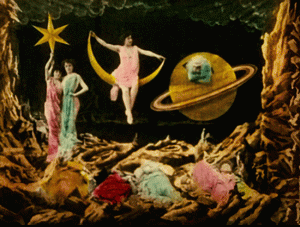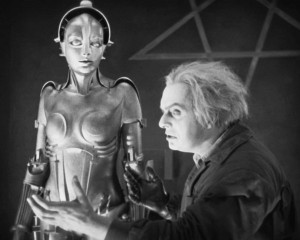I will start with the silent period, covering basic 1890-1930, but after that I intend to tackle the question decade by decade.
 A trip to the Moon (Le voyage dans la lune) – 1902 – George Melies
A trip to the Moon (Le voyage dans la lune) – 1902 – George Melies
I consider this one of the most important SF films from the silent era because this is really the movie that kicked off SF as spectacle. The science was ludicrous and no one making did so under the illusion that this was a reality based adventure. This was about the wondrous and magical effect that the motion picture camera afforded the filmmakers. This is a short film, just 13 minutes long, but it cast a long shadow across the landscape of cinema. This film is the birth of special effect and special effect from this moment onward would remain at the heart and soul of SF cinema.
 Metropolis – 1927 – Fritz Lang
Metropolis – 1927 – Fritz Lang
Director Fritz Lang is a towering figure in film. The visionary man behind such classics as ‘M’, the film that made Peter Lore an international star, Lang always had a deep and sincere love for Science-Fiction. (In fact it was Lang who convinced Robert A. Heinlein to start writing Young adult novels.) I would argue that Lang’s better SF movie was 1929’s Woman in the Moon (Frau in Mond.) Woman in the Moon is less didactic and pays a closer attention to scientific details while delivering a better story and adventure. (This film was also a favorite of Werner Von Braun who saw it as a teenager and right up through Apollo copied the paint schemes for rockets from this movie.) However, Woman in the Moon simply has not impacted to trajectory of SF films in the manner that Metropolis did.
Metropolis, a sprawling massive production set in a future city divided between the exploited poor and the extravagantly wealthy, set design and social models that were to be copied for decades, Ridley Scott’s Blade Runner look and feel can be trace directly back to Metropolis. The sprawling, towering city of the future was born here in this film.
The original print was lost for decades until 2010 gave us a restored version that is close to the original running time, but not quite. 1984 gave us a version where musical Giorgio Moroder revived the film with a soundtrack that included Queen’s Freddie Mercury, Adam Ant, Pat Benatar and many others.
Your thoughts?
